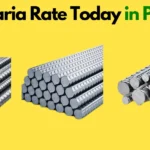Architecture is an art form that transcends time, and one of its most iconic elements is the architectural column. These vertical pillars have graced the facades of buildings for centuries. It is embodying strength, beauty, and cultural significance. From ancient civilizations to modern metropolises, corinthian columns architecture have stood as testaments to human ingenuity and craftsmanship.
Historical Significance of Architecture with Columns
Ancient Origins
Architectural pillar columns trace their origins back to ancient civilizations such as Mesopotamia and Egypt. In these early cultures, columns served both structural and symbolic purposes. So it supports massive stone structures while also representing divine or royal power.
Classical Influence
However, it was the Greeks who elevated the column architecture. Inspired by the natural symmetry and balance found in nature, Greek architects developed three primary orders of columns: Doric, Ionic, and Corinthian. Each order had its distinct proportions and decorative elements because of their importance.
Types of Architectural Columns
Doric Columns Architecture
The Doric order is the oldest and simplest of the three Greek orders. Because it is characterized by its sturdy, fluted shaft and plain, capital-less design.
Ionic Columns Architecture
In contrast, the Ionic order is known for its slender, fluted columns topped with volutes, or spiral scrolls.
Corinthian Columns Architecture
This type of column is very important. Because the Corinthian order is the most ornate and elaborate, featuring slender, fluted columns.
Tuscan
The Tuscan order, a variation of the Doric order, is distinguished because of its smooth shaft and simplified capital.
Composite
The Composite order combines the Ionic and Corinthian orders. It features a capital adorned with volutes and acanthus leaves.
Architectural Columns in Different Cultures
Greek Architecture
Greek architecture, with its emphasis on harmony and proportion. It sets the standard for ancient Greek architecture columns.
Roman Architecture
The Romans adapted architectural principles. They incorporated columns into their monumental structures such as temples, basilicas, and arches.
Neoclassical Revival
During the Renaissance and Neoclassical periods, architects liked classical forms. It includes the use of columns which are used in civic buildings and private residences.
Islamic Architecture
In Islamic architecture, columns play a crucial role in the design of mosques, palaces, and madrasas. So it is adorned with intricate geometric patterns and calligraphic inscriptions.
Functionality of Architectural Columns
Supportive Role
Beyond their aesthetic appeal, architectural pillars provide essential structural support, distributing weight and bearing loads to ensure the stability and longevity of buildings.
Aesthetic Purpose
However, columns are not merely useful; they also serve as home embellishments, adding depth, rhythm, and visual interest to facades and interiors.
Design Elements of Architectural Columns
Capital
The capital, or the topmost part of a column, varies in design and decoration according to the architectural order. It serves as a crowning feature which enhances the column’s visual impact.
Shaft
The main body of the column is typically smooth. Therefore, It can vary in height and diameter depending on the architectural style and structural requirements.
Base
The base of a column provides stability and support. It anchors the column to the ground or pedestal upon which it rests.
Modern Applications of Architectural Columns
Residential Buildings
In contemporary architecture, columns are often used to add a sense of grandeur and home improvement framing entryways and supporting porticos and verandas.
Commercial Spaces
Similarly, in commercial settings such as hotels, office buildings, and shopping malls, columns are employed to create imposing entrances and grand interior spaces.
Public Structures
The columns continue to adorn public structures such as museums, libraries, and government buildings. It serves as a symbol of authority, culture, and civic pride.
Architectural Columns in Interior Design
Enhancing Space
In interior design, columns can be used to define and delineate spaces. So it creates visual boundaries without impeding the flow of light and movement.
Creating Focal Points
Moreover, columns can serve as focal points or design features. It draws the eye upward and adds verticality to rooms with high ceilings.
The Influence of Architectural Columns on Art and Culture
Literature
Architectural columns have inspired poets, writers, and thinkers throughout history, symbolizing strength, and stability to human civilization.
Visual Arts
In the visual arts, columns have been represented in countless paintings, sculptures, and architectural drawings, capturing their timeless beauty and lifestyle.
Symbolism
Beyond their physical form, columns carry symbolic meanings related to power, authority, and order. It makes them very effective in art, literature, and popular culture.
Maintaining and Restoring Architectural Columns
Cleaning and Preservation
Preserving the integrity of architectural columns requires regular cleaning and maintenance to remove dirt and environmental pollutants that can degrade their surfaces over time.
Repair and Reconstruction
In cases of damage, skilled craftsmen and restoration specialists can repair or replace damaged elements of columns. They use traditional techniques and materials to ensure historical accuracy and authenticity.
Contemporary Trends in Architectural Column Design
Minimalism
In contemporary architecture, there is a trend towards minimalist column designs. Clean lines and simple forms characterize it.
Sustainability
Moreover, sustainable materials and construction practices are used in column design, reflecting a growing awareness of environmental issues and the need for eco-friendly building solutions.
Innovative Materials
Advancements in materials science and technology have led to the development of new materials such as carbon fiber, fiberglass, and engineered composites, offering greater strength, durability, and design flexibility in column construction.
Future Prospects and Evolution of Architectural Columns
As architecture continues to evolve in response to social, cultural, and technological changes, the role and significance of architectural columns of Melton Classics are likely to evolve as well, adapting to new aesthetic preferences, functional requirements, and sustainability imperatives.
Explore our exquisite collection of architectural columns at Melton Classics. Discover the perfect columns to enhance your home’s beauty and add sophistication to any space.
Conclusion
Architectural columns stand as timeless symbols of human creativity, craftsmanship, and cultural heritage. From ancient temples to modern skyscrapers, these elegant pillars have endured the test of time, enriching our built environment with their beauty and grace.
FAQs
- Why are architectural columns important in building design?
Architectural columns provide both structural support and aesthetic embellishment. It enhances the beauty and stability of buildings. - What are the different types of architectural columns?
The main types of architectural columns include Doric, Ionic, Corinthian, Tuscan, and Composite orders. Each with its distinctive characteristics and design elements. - How are architectural columns maintained and preserved?
Architectural columns are maintained through regular cleaning and preservation efforts. It includes repairs and restorations by skilled craftsmen using traditional techniques and materials. - What is the significance of architectural columns in historical architecture?
Architectural columns have played a significant role in historical architecture. Therefore, serving as symbols of power, authority, and cultural identity in civilizations throughout the ages. - What trends are shaping the future of architectural column design?
Contemporary trends in architectural column design include minimalist aesthetics, sustainable materials, and innovative construction techniques. So it prioritizes both form and function.



